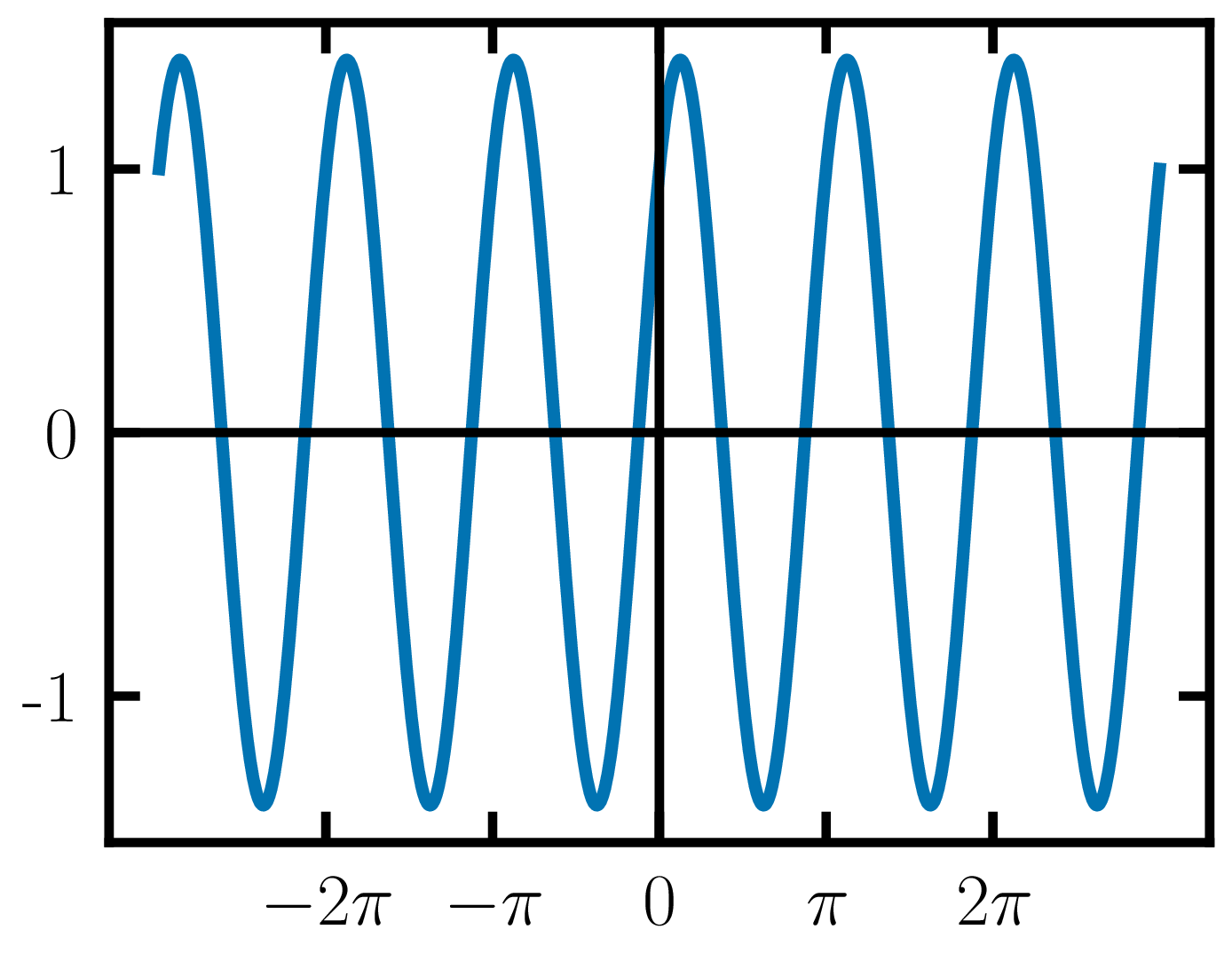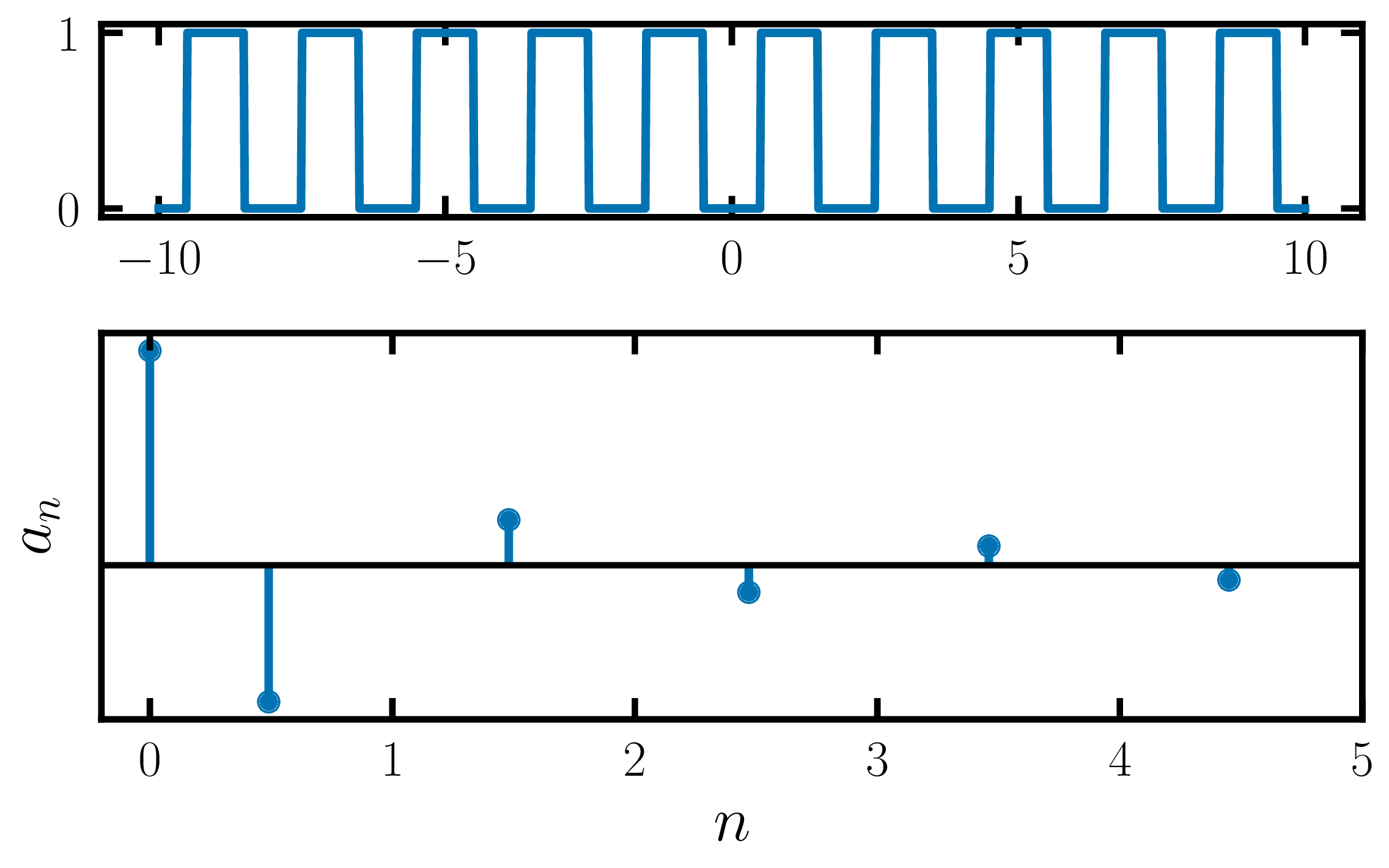Deepthi Gorthi Radio astronomer
Fourier Series
My professor once told me– “Fourier series are in your blood.” You aren’t really learning anything new. I’ll prove that to you. Guess what is the function shown below:

Hmm, maybe you are right. Now guess what is the function below:

The first is $\sin{(t)}$ and the second is $\cos{(t)}$ if time is taken as the variable against which the functions were plotted. The variable can also be position of an object.
What you did above is compute the Fourier series of that function!
Fourier Series decomposition breaks down the given function into a sum of discreet sine and cosine waves. The discreet part is important.
Okay, I cheated a little bit. The above two plots were not a sum of different sines and cosines. But.. what’s this plot?

Every periodic function can be decomposed into a Fourier Series.
If a periodic function $f(t)$ has a fundamental period of $\omega_0 = 2\pi/T_0$:
where the coefficients $a_n$ and $b_n$ can be determined through the slightly complicated equations below:
An example of a Fourier Series is shown below for a periodic top-hat function or a square wave (upper panel). The time-period of the square wave is $T_0 = 2$ which makes the fundamental frequency $\omega_0 = \pi$. The coefficients of $\cos{(n\omega_0 t)}$ are shown in the lower panel.

Some things to remember about a Fourier Series:
- Every periodic function has a Fourier Series.
- Every function that can be assumed to be periodic, can be decomposed into a Fourier Series.
- If you have a Fourier Series, it represents a periodic function.
- Even functions $\left[f(-t) = f(t)\right]$ only have a cosine component (i.e, $b_n =0 $).
- Odd functions $\left[f(-t) = -f(t)\right]$ only have a sine component (i.e, $a_n = 0$).
Sometimes you’ll find fancy people writing the Fourier Series in terms of exponents using Euler’s formula $e^{jt} = \cos{t} + j\sin{t}$. Don’t get tripped up, it’s just the good old Fourier Series that lives in you.
Fun Fact: Fourier Series was actually discovered ages ago when Ptolemy used the theory of epicycles to explain the elliptical orbits of planets. Epicycles are nothing but the circles formed by $e^{j\omega t}$ and the elliptical orbit Ptolemy was trying to describe is the function he was really decomposing. What Ptolmey did not realise is that his theory of epicycles could explain any periodic orbit! Watch this cool video if you don’t believe me (really because you want to procrastinate).